Is assemble to order (ATO) the right workflow for your business?
In this article, we explore the assemble to order workflow, including examples, the pros and cons, and the tools you can use to make it work in your favor.

Food production is not only an expansive sector of the manufacturing industry but an important one too. Discover the industry and how to run a business in it.
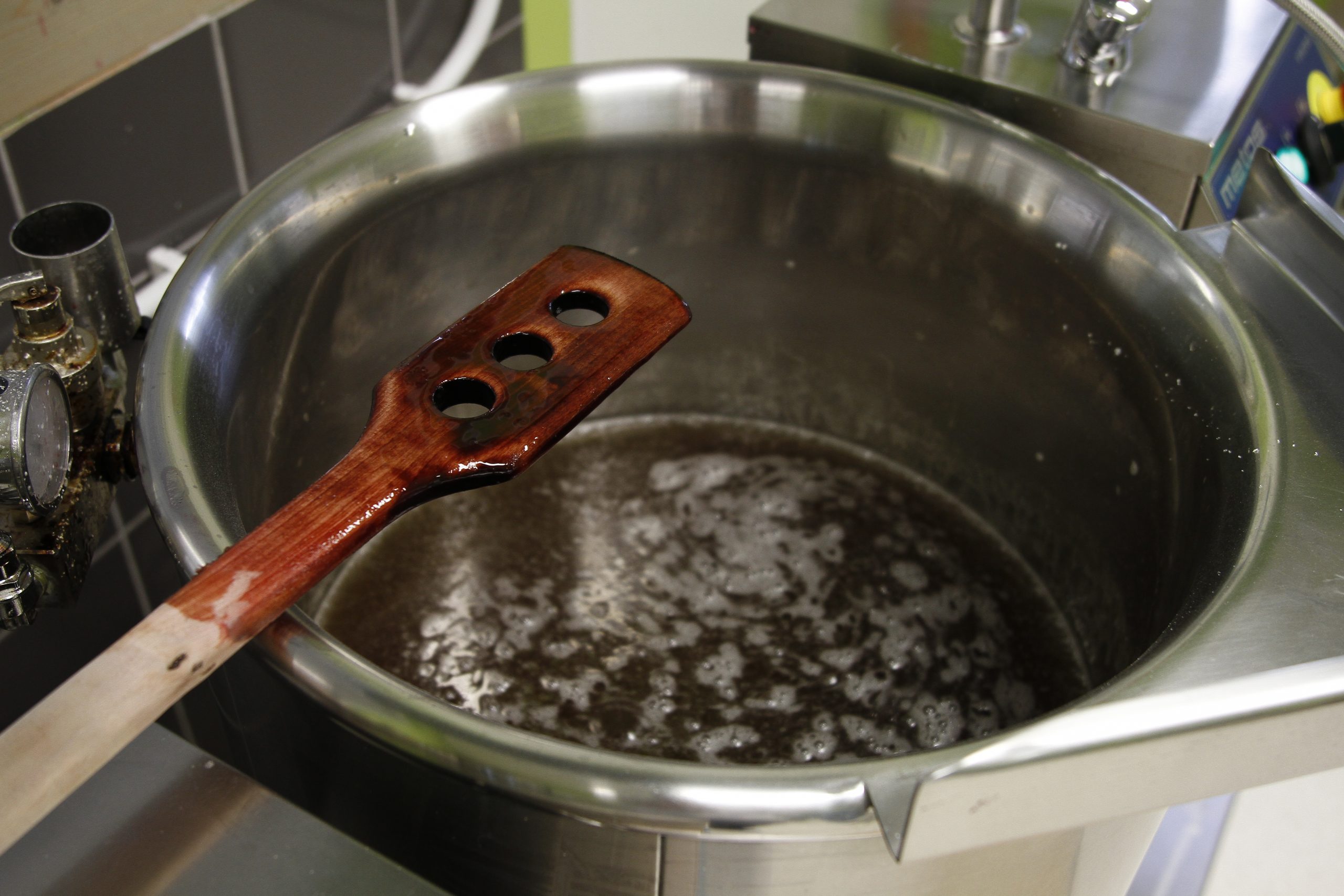
In this article, we’re going to explore the history of the food production, the processes businesses implement, the steps you can take to become a successful food manufacturer, and the perfect tool to help you along the way.
When you begin your manufacturing endeavor, you need to ask yourself one important question. Will your product be satisfying a need or a want?
Yeah, convincing someone that they want your product is great, but the best thing is to have a product that consumers need, something that is essential to living.
Anything that ticks our physiological needs is certainly a product that is going to perform well.
Theoretically speaking, that is. There’s still competition you’ll need to overcome and a lot of room for error when making something as seemingly simple as food.
That’s why we’re going to investigate the food production industry so you can better understand how this industry operates, and if you’re a food manufacturer, how you can get the most out of it.
Food production complex, with thousands of businesses with various products, supplying the food that is consumed by the world’s population.
Regardless of whether you’re a humble baker or a factory owner pumping out ready-made microwavable meals, handling your raw materials is extremely important. That’s why it’s crucial to learn how to calculate raw materials so as not to let your food inventory get out of control.
So, without further ado, let’s delve into this rich industry and look into the tools and tips you can use to help you with your food production.

Food production encompasses all businesses that are involved in the preparation of foodstuffs by converting raw materials into ready-made food products for use by consumers in their homes or for other food processing businesses.
The operating food production businesses take scientific approaches to food manufacturing and span across several different food industry sectors, such as:
Consumers spend roughly $1 trillion annually for food in the US alone, which accounts for about 10% of the country’s GDP.
Food production accounts for 16.5 million jobs, and in 2004, the worldwide sales of processed food generated a whopping $3.2 trillion.
Not only does food production play a massive role in our day to day lives, but starting or managing a food production business can provide ample opportunities, just as long as you can carve out your piece of the market.
But, before we look into doing that, let’s quickly explore the history of food manufacturing.
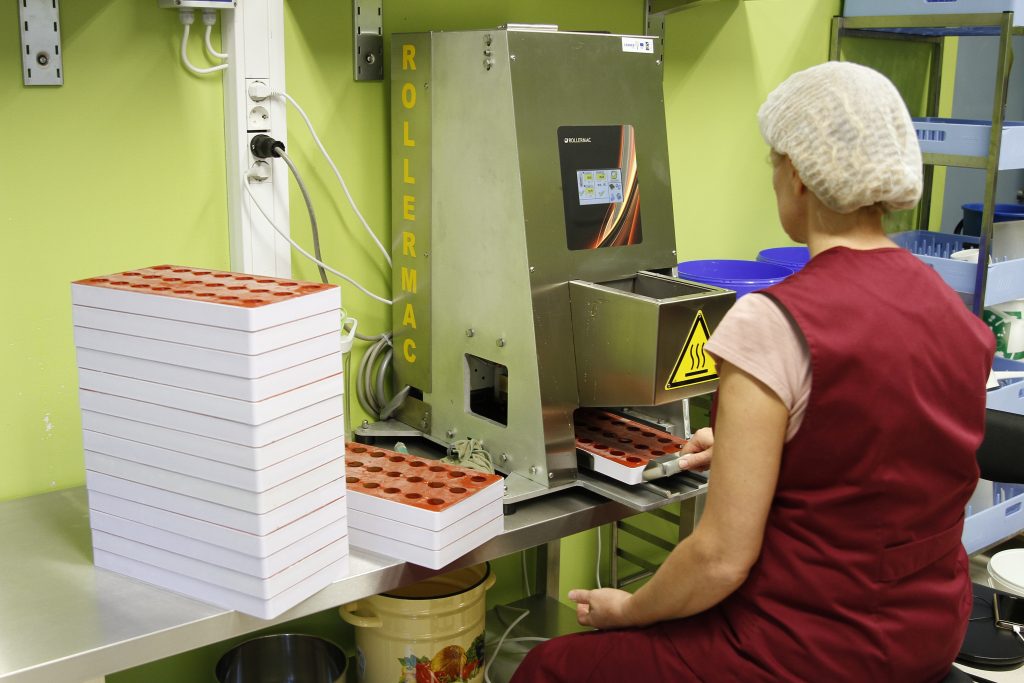
Food manufacturing spans back to ancient times when communities took steps to preserve their harvests to help them survive the harsh winters.
Not just the vegetables and meat were saved, but our ancestors would have practiced lean inventory techniques by taking the skins from hunts and converting them into apparel with leather manufacturing.
But, as soon as these communities had a surplus of food, they were able to grow and build a hierarchy around the food, based on management, tracking, and the distribution of their inventory.
Food manufacturing probably started on an industrial level with sugar, which was taken from New Guinea, grown in plantations, and manufactured into different products across the globe.
But with the industrial revolution and expanding urban populations, food production changed, with a new focus on producing foodstuffs with a longer shelf life since more and more people couldn’t get access to fresh food.
In the modern era of food production, manufacturers create a range of products, from frozen foods to supplement pills for your essential nutrients.
And synthesizing products now quite often bears no resemblance to the raw materials they’re originally made from.
But even though the processes for manufacturing food have improved it, unfortunately, doesn’t mean for the best as obesity levels have increased, and there have been horror stories involving how raw materials are sourced, as experienced with The Horsemeat Scandal.
So, what exactly are the food manufacturing processes?
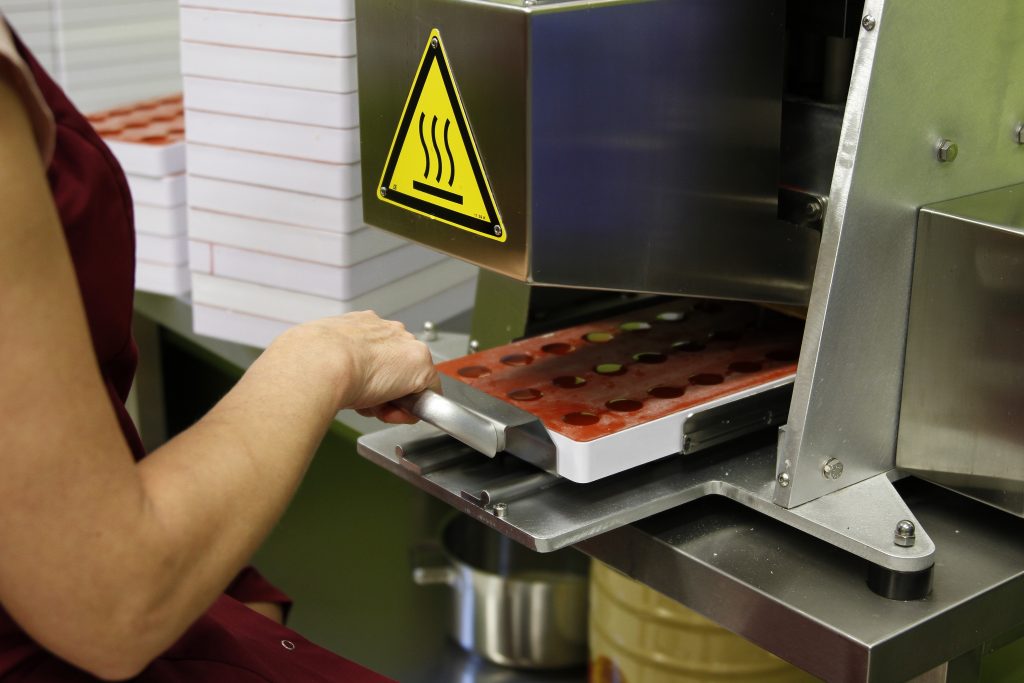
Now, the manufacturing processes that a food manufacturer will follow will all depend upon the type of business they own.
Food manufacturing processes can be:
One-off production – This method is used by bespoke manufacturers who’re making custom orders based on a customer’s specification. For example, a wedding cake would use a one-off production.
Batch manufacturing – Manufacturers will often use this process if they’re unsure about how well their product will perform on the market. Alternatively, a business such as a bakery will use batch manufacturing to produce and ‘x’ amount of goods based on demand planning.
Repetitive manufacturing – This method is for the manufacturers who have access to a mass market and produce their products on a continuous line. This will happen in factories that make chocolate bars, ready meals, and canned food.
Just-in-time inventory (JIT) – This is mostly used by restaurants, anywhere where the customer chooses what they want, and the product is made in-house in a kitchen or at the counter in the case of a sandwich shop.
These are the processes that others working in the food production industry follow when manufacturing their products.
But there’s more you’ll need to know if you want to take a bigger piece of the market and not be left with the crumbs.
So, here are some steps you can follow to make sure your business grows and becomes sustainable.
Those in the food and beverage industry need to find software that can help them manage all the different types of inventory that they carry. That’s why some, particularly artisan coffee makers, turn to coffee roasting software to help them manage their inventory.
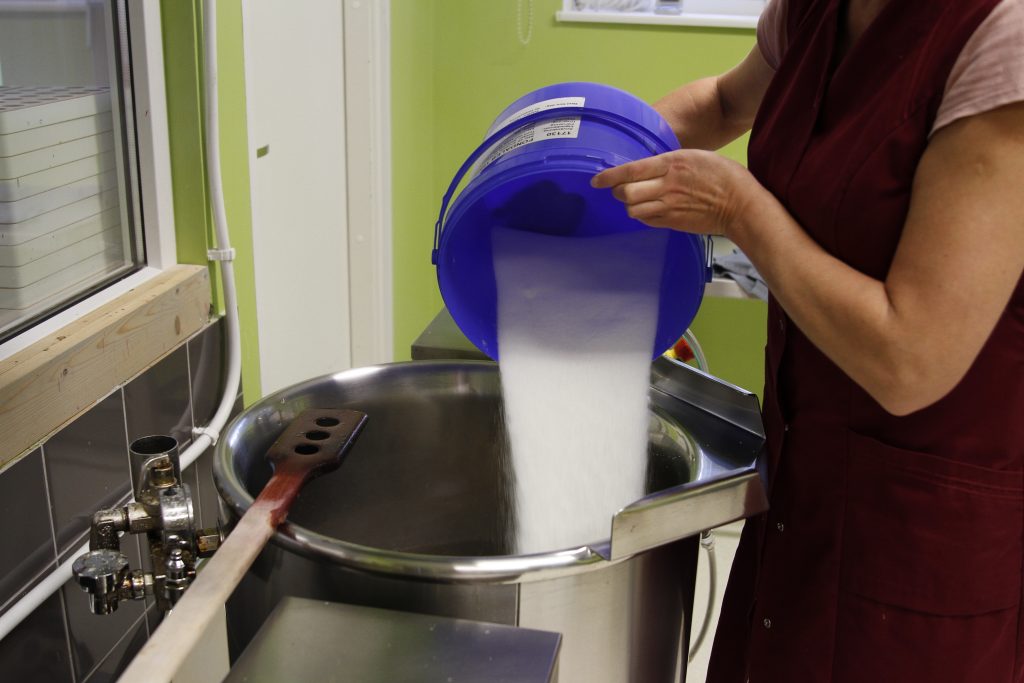
If you want to make sure you succeed, be sure to follow manufacturing trends and avoid the mistakes others have made in the food manufacturing industry.
You can use these six points to get started:
1. Prepare for risks
Every manufacturer should have a Plan B. For example, being able to quickly identify and fix bottlenecks in production. However, when handling food which has a short expiry date, you can’t afford to have any stalls in production. Think ahead by performing some strategic planning.
2. Become a green manufacturer
Did you know a food manufacturing company spends 60% of their energy bills on refrigeration? If you simply work on your routing manufacturing, you could put less stress on your chillers by storing them away from heat sources. Which will save you money and reduce your carbon footprint.
3. Save water
The food production industry uses more water than any other sector in the manufacturing industry. This will tie in with trying to make your production eco-friendly, but by cutting your water consumption you will save your company a lot of money. Chicken-nugget manufacturer, The Equity Group, reduced water usage by 30% and saved $100,000 annually.
4. Use predictive maintenance
Predictive maintenance is the technique of determining the condition of equipment to estimate when maintenance should be performed on said equipment. This allows you to perform maintenance before a machine breaks down and stops production. New Belgium, a beer brewer, was able to cut downtime by 50% with predictive maintenance.
5. Reduce the risk of contamination
This is extremely important, as there are tons of regulations you’ll need to follow and a recall due to contamination can be expensive (or have more serious repercussions). To avoid contaminations, be sure to only use equipment intended for food and drink manufacturing. Also, perform inspections on raw material to avoid contaminations such as the wrong meat being used in your products.
6. Embrace automation
Finally, the quickest and easiest way to enhance your food manufacturing business is to adopt automation into your production lines. That doesn’t mean firing all your employees and using electronic arms. For example, Puppy Cake was able to improve the efficiency of their day-to-day operations to 100% by simply using food traceability software.
Follow these six steps, and you’ll be sure to be on the right path to being successful in food production. However, point six is extremely important, as it’ll be able to help you tackle the other points listed above and many other challenges faced in food manufacturing.
Finding a tool that can help you automate your inventory and help you with your production planning is essential to set up a smooth food production line.
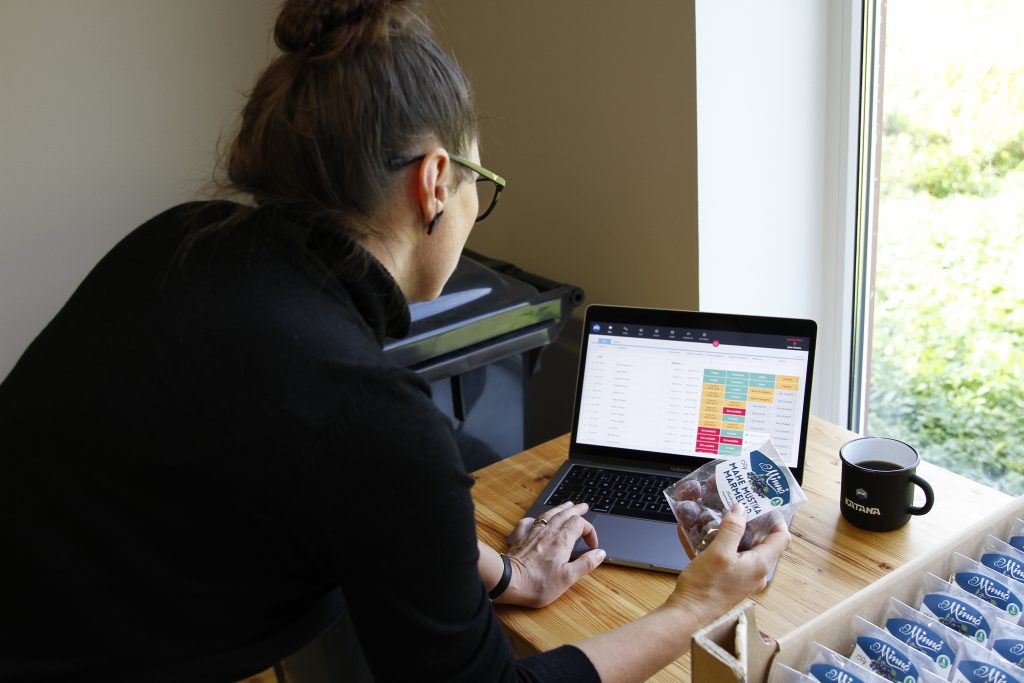
Smart Manufacturing Software, like the one offered by Katana, is a tool built by manufacturers for manufacturers in food production.
Regardless of if your food production line workflow is based upon the make to order or make to stock models, Katana has been designed to centralize your entire business onto one ridiculously easy to read, visual dashboard.
So, how exactly does Katana help businesses get their food manufacturing order control?
Raw Materials and Finished Goods Inventory Management
Good inventory management practices are crucial, as the likelihood of handling perishable goods in the food production industry is high. However, being able to view your inventory movements in real-time is going to be essential if you want to scale your business.
Katana uses a unique auto-booking system that automatically allocates your raw materials to manufacturing orders and your finished goods to sale orders. This will let you know right away if you have the inventory to fulfill open orders, or if you’ll need to purchase more supplies or make new products.
Product Recipes/Bill of Materials
If you’re producing one type of chocolate bar or making pastries that all use different ingredients, Katana’s got you covered. You can easily save your bill of materials (BOM), including your product materials, multi-level BOMs, and operations.
Once you’ve saved your BOMs, Katana will automatically calculate your manufacturing costs and check your availability on raw materials for any open manufacturing orders.
Priority-Based Production Planning
Katana automatically schedules your production in the order that manufacturing orders are generated. However, if you have a manufacturing order that needs to be completed as soon as possible or if you have an order come in from a VIP customer, Katana’s nifty drag-and-drop system allows you to easily reprioritize your production workflow.
Better still, the auto-booking system will redistribute your available inventory to fit the new schedule.
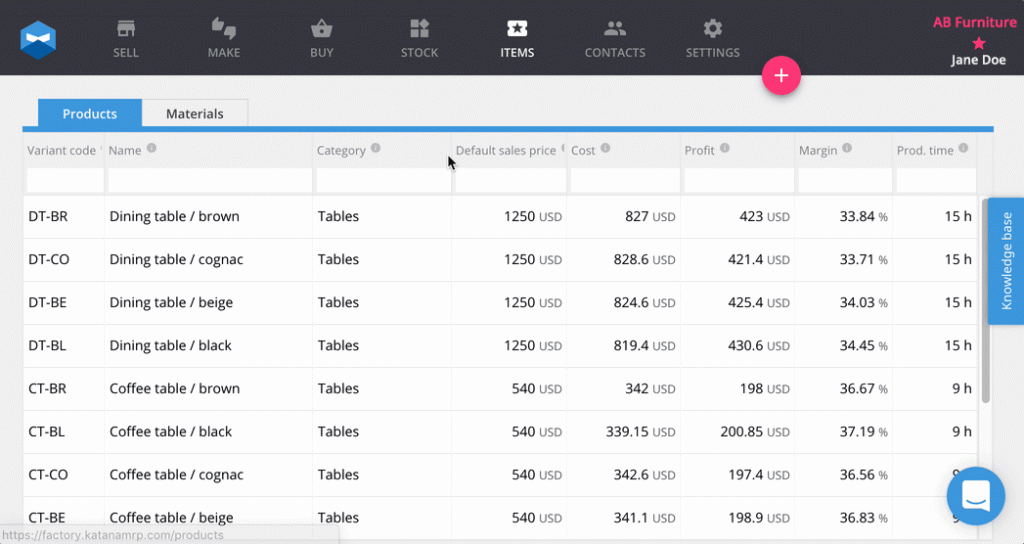
If you want to know more about how Katana works and can help your food production line, be sure to check out the video below.
As you can see, the food production industry is an extremely important sector of the manufacturing world, even if the public’s perception of it may have soured over the years due to the rise of a cruelty-free culture.
We didn’t touch upon how food politics how the food industry influences nutrition and health in the article, from how our understanding of a balanced meal has changed over the decades to how veganism is becoming the newest trend in dieting.
However, if you want to be successful in food production, being aware of these trends will allow you to adapt and diversify your products to keep up with these societal changes.
You should also be aware of your competition too, as a society where emphasis shifts from production of food to production of manufactured goods could indicate that the market is oversaturated (for example, restaurants appearing in the same area and all quickly closing).
And that’s all we have for today! We hope that you enjoyed the article, and if you follow the steps above, you’ll be sure to get your food manufacturing business on the fast track to success.
But more importantly, make sure that you find a tool that has been built to help businesses in food production.
Want to see it for yourself? Request a demo, so you can get a taste of how Katana is perfect for your business.
If you have any questions, please don’t hesitate to drop us a question or contact us via social media.
And until next time, happy manufacturing.